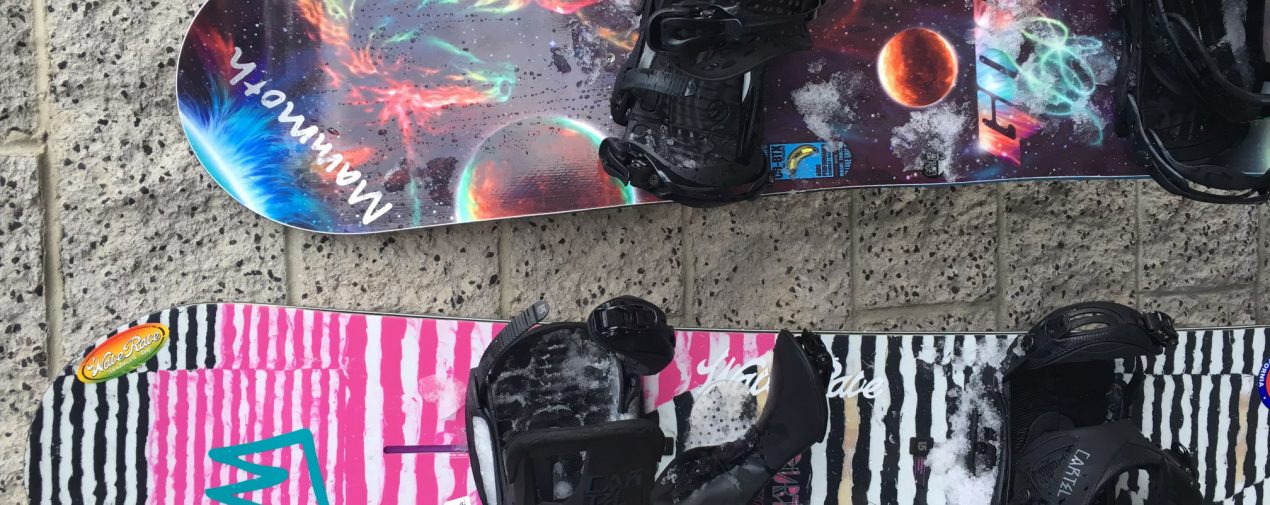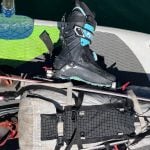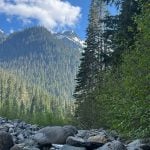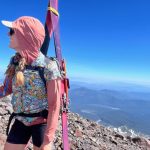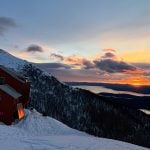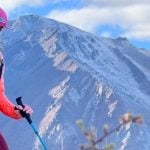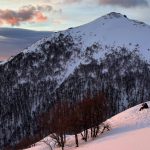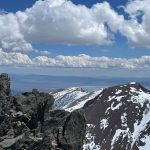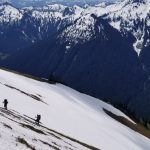Tips for Choosing Your First Snowboard
You’re learning how to snowboard, you’ve rented or borrowed a board or two, and you’re ready to commit your winter season to mastering the craft of board sports. You want to dive headfirst into the sport and purchase your very first snowboard. But what board should you buy? With so many snowboards on the market, the task of finding the perfect first snowboard can be overwhelming. Use this guide to learn what to consider in finding the ride that’s right for you.
1. Consider the rate at which you will progress, and determine if you want a beginner-oriented board, or something that you can grow into.
When deciding to buy a snowboard, you should first consider your current ability level, and how much you expect to progress your snowboarding skills during the upcoming ski season. If you live in a mountain town where you can ride the local ski hill several times per week, it’s a safe bet to assume that your progression will be relatively quick. If you can only visit the mountains a handful of weekends in a season, your progression is likely to be slower.
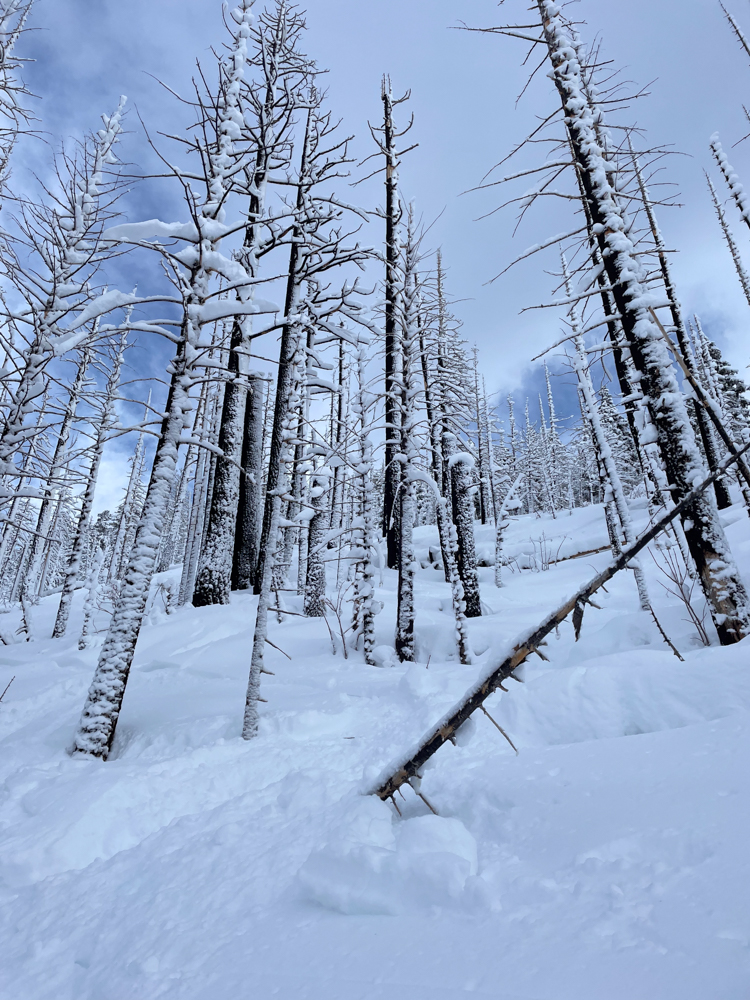
Considering the speed of your progression matters because it will determine the type of board that will be most appropriate for you. Very few boards are specifically marketed as “beginner” boards, but several qualities about a board can clue you in to whether it is suited for new snowboarders. Some boards will be just-okay boards to learn on, but great boards for years to come. Other boards will be excellent to learn on, but will be quickly outgrown by a rider who progresses substantially throughout the season.
Be honest about how much you think you will ride during the season. Boards that are more oriented toward “growing into” will usually be more difficult to learn on than boards that are best suited for beginners. This can make for a more frustrating learning process. That said, if you feel like you will have a lot of opportunity to progress during the season, it can be equally frustrating to spend the money on a board that no longer suits your ability level.
2. Think about what type of snow conditions and terrain you will be riding on your new snowboard. Do you want an all-mountain board, or something more specialized?
Now that you’ve decided whether you want a beginner-oriented or a more intermediate-style board that you can grow into, it’s time to start imagining what kind of snowboarder you might want to become. Chances are, you’ll ride a little bit of every type of terrain and style when you’re learning the craft– some groomers, some off-piste, some park. For this reason, most beginners choose an all-mountain style board that will allow them to dabble with the various disciplines of snowboarding. An all-mountain board is suitable for cruising every type of terrain on the mountain and learning what you like.
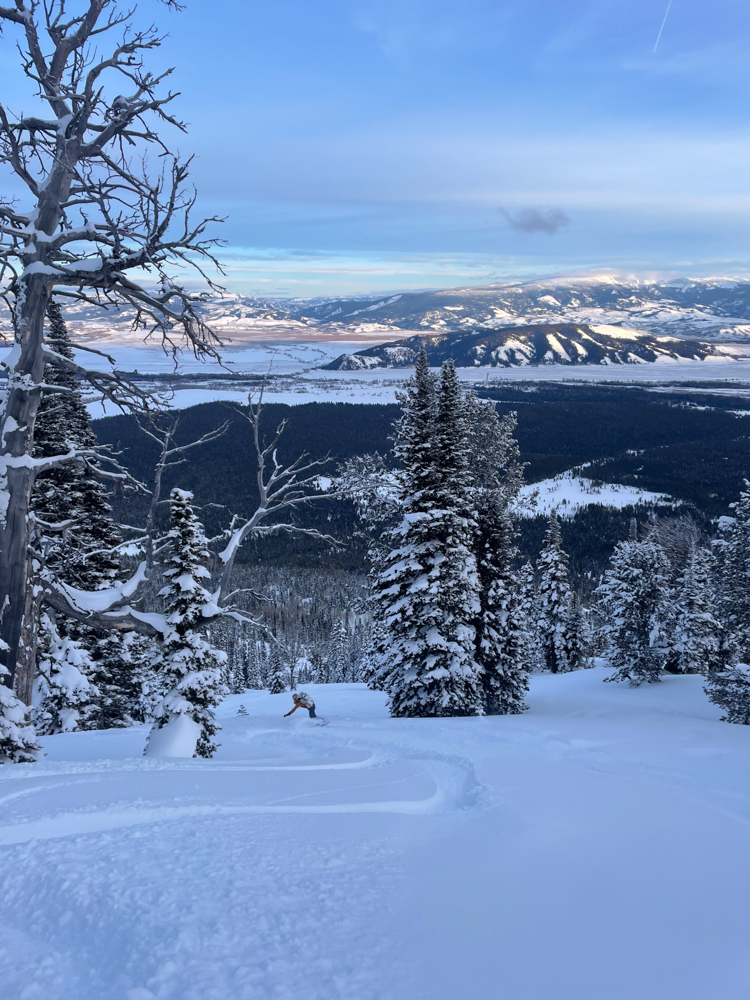
That said, a true all-mountain board doesn’t do any specific thing on the mountain especially well. For this reason, many snowboarders end up with a quiver of boards which they will bring out for different snow conditions and different terrain types. The quiver could include a second, third, or maybe even fourth board with a distinct function.
If you know you only want one board and feel drawn to a particular type of snowboarding, it could make sense to buy a more specialized board. This said, an all-mountain board is never a bad thing to have. In most cases, as you learn how to snowboard, you will learn what you like to do, how you ride, and the type of snow you most frequently encounter at your nearest resort. This will give you a better sense of what to buy next: either to add to a quiver, or as your new daily-driver.
3. Piece together the following qualities to find your ideal board.
Flex
Flex refers to how much a snowboard bends. A board that has soft– or more bendy– flex is easier to turn, and overall more forgiving than a stiffer board. The downside of a soft board is that it will be less stable and responsive than a stiffer board. For this reason, I would recommend that a beginner choose a soft to medium-flex board. If you think you might be interested in hitting the park, err on the softer side. If you think your preference might be carving or freeriding, choose something with medium flex.
Shape
The two primary shapes of a snowboard are twin and directional. Twin means that the tip and tail of the board are identical, making it possible to ride the board with either end in front. A snowboard can also be directional, meaning that it is designed to be ridden in one direction. A twin board is better for figuring out your stance, riding switch, and learning tricks. I would recommend that nearly all beginners choose a twin-shaped board for their first snowboard, as it offers the maximum flexibility.

Profile
A board can have any combination of the following profiles: flat, camber, and rocker. Flat boards are exactly what they sound like: boards with this profile will generally feel predictable and stable. A more cambered board is best for carving and faster riding, but this profile makes it easy to “catch an edge” and fall when learning. Edge hold on firm slopes and stability are generally best on a cambered board. A more rockered board will be playful and forgiving, but more difficult to ride at high speed. Powder and park riding are generally most pleasant on a rockered board. The ideal beginner board will have a mix of camber and rocker: enough camber to allow you grip the snow on firm downhills, and enough rocker to allow you to turn without catching an edge too easily.
When you progress in your snowboarding, you will start to learn what it is that you like in a snowboard, and what kind of terrain you like to ride. If you have an inkling that you might like a certain kind of riding, like park riding, choose a board that is more park-oriented, but still good for all-mountain riding. If you know your home resort is more like an ice-skating rink than a ski hill, choosing a more cambered board that still has some rocker will be to your benefit.
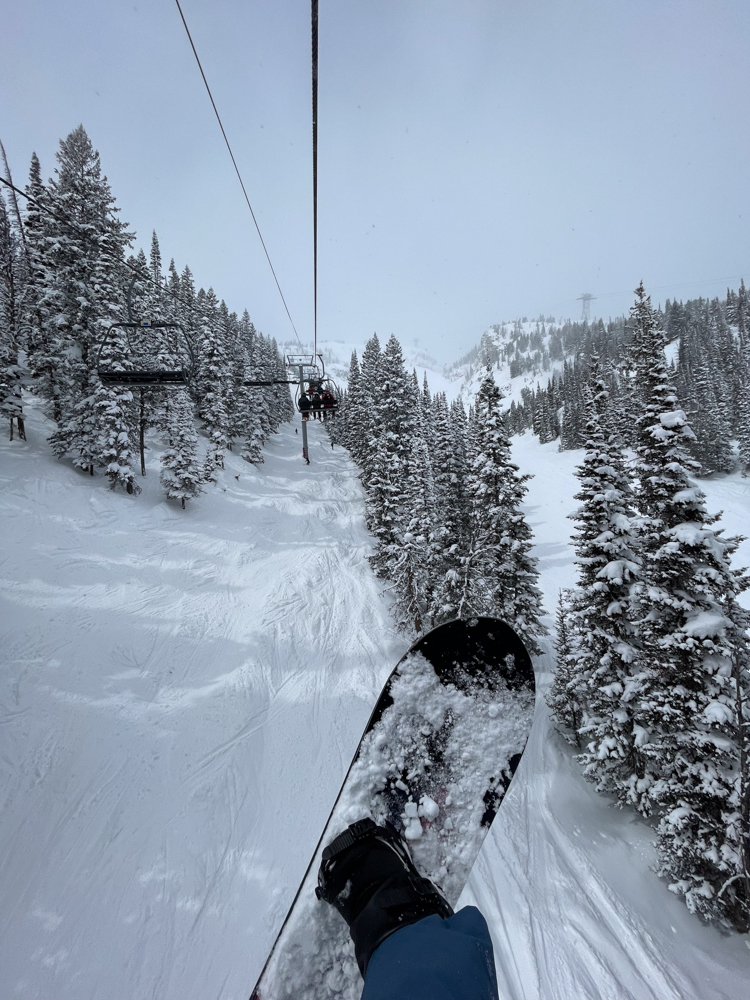
Most beginners will want a twin-shaped all-mountain board with soft to medium flex, and a mix of camber and rocker. This said, consider what type of snowboarding and snow conditions you will be encountering to decide what type of board is right for you.
4. Size your snowboard appropriately.
Consider your height, weight, and riding ability when sizing your snowboard. Most snowboard manufacturers will include a weight and height chart on their website that will tell you what will be appropriate for you. Different shapes of boards with different camber-rocker profiles will be sized differently, making it important to look at the size chart for the specific board you are looking for.
Women’s boards are often made in smaller sizes than unisex or men’s boards. As a small woman, I generally need to purchase women’s-specific boards because men’s boards don’t usually go down to my size. Choose the board with appropriate sizing, regardless of whether it is marketed toward men or women.
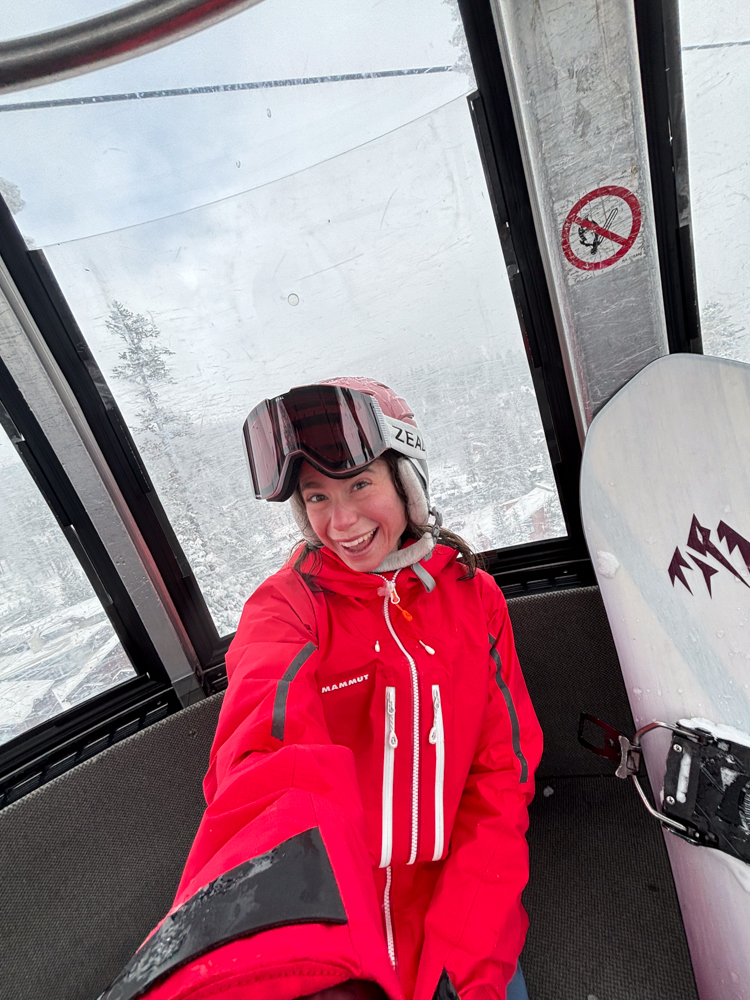
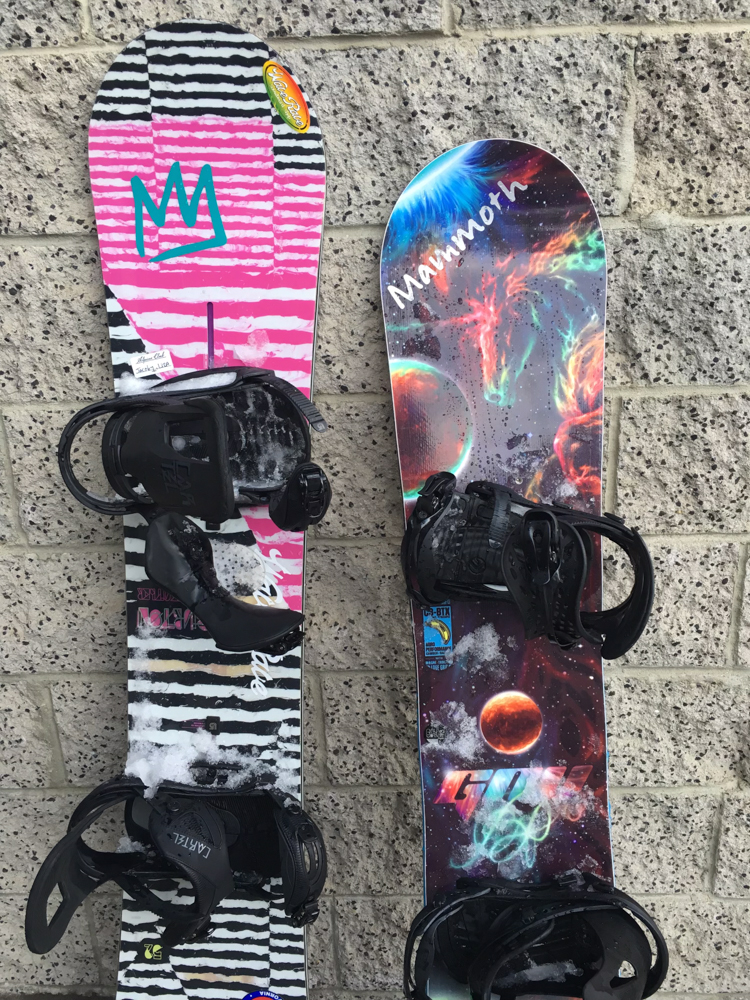
For those with larger feet, toe drag can be a problem. Choose a snowboard with wider waist width to accommodate larger feet and prevent toe drag. For those with smaller stature, a narrower waist width can be easier to turn.
While manufacturer’s can make general recommendations about sizing, sizing is also a matter of feel. A rider who likes to go fast may want a longer board than recommended despite being a smaller human. A rider who wants a more nimble feel for tight turns in the trees might want a shorter board than recommended. As with each of my tips, you will learn what you like through getting out there and riding.
The Final Word
With these principles in mind, you are well on your way to finding your ideal first snowboard. Who knew there was so much to consider? To be sure that you are getting the right board, I would recommend a visit to your local snowboard shop to talk to an expert and hash out the details. A snowboard is a big purchase, and buying it right the first time will vastly improve your learning process, and your riding for years to come. Good luck, and happy riding!
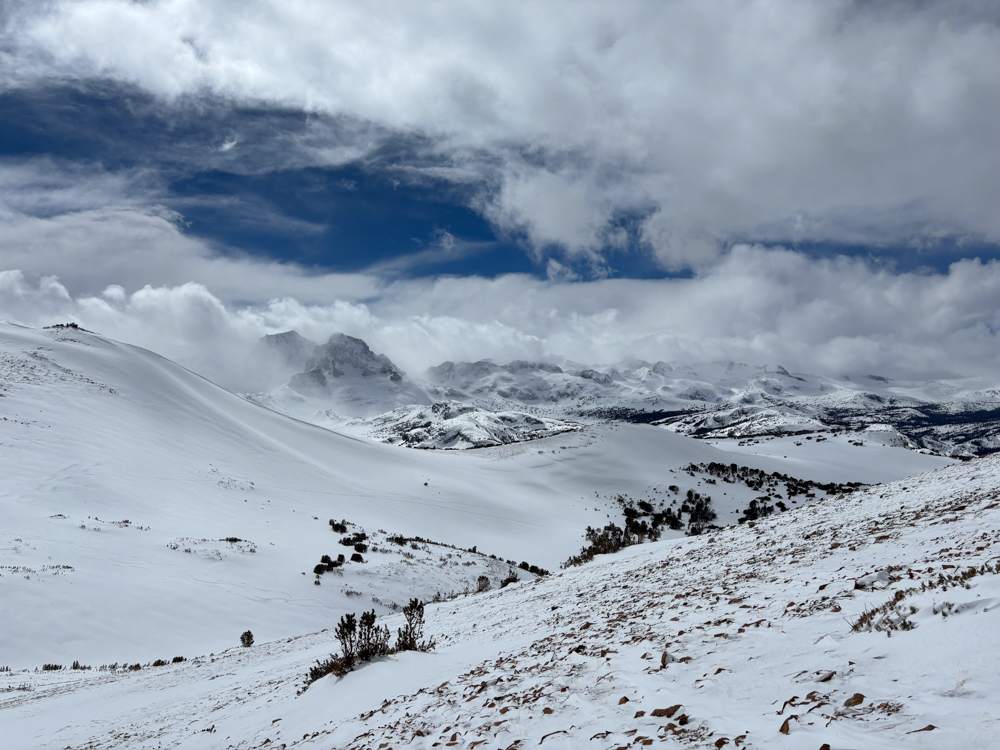
About the Gear Tester
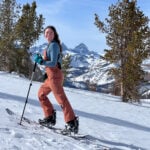
Jackie Florman
Jackie is a backpacking guide at Lasting Adventures Guide Service in Yosemite National Park, CA. She also works on a snow hydrology field research team, writes for HikingDaily.com, and is currently writing a thesis in Environmental Studies at the University of Colorado, Boulder. She loves splitboarding, scrambling, and rambling around in the Eastern Sierra and the Colorado Rockies. Follow her adventures on instagram @jackieeflor.

